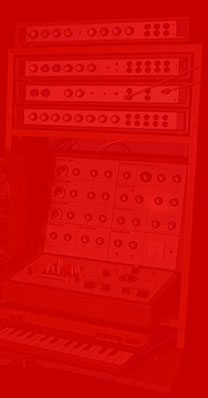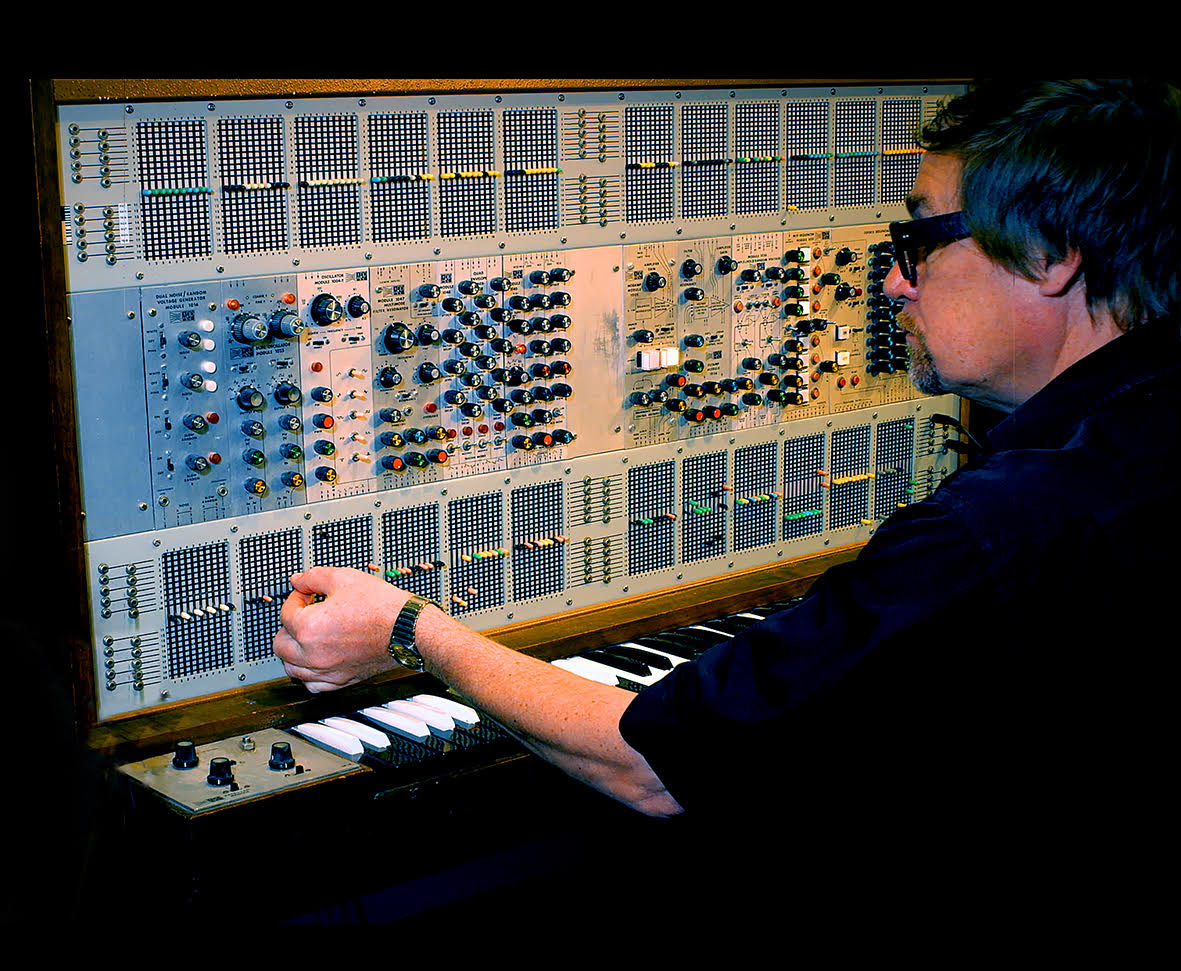
Benjamin David Edwards, known professionally as Benge, is an English musician and record producer based in Cornwall, England.
We became friends when he was based in London and playing in duo with Douglas Benford, under their Tennis moniker.
BiP_HOp released 2 albums with Tennis.
In parallel he was running his label Expanding Records focusing on instrumental electronic music.
Later on he moved away from the capital and started his Memetune Studios which houses a large collection of vintage electronic synthesizers and other recording equipment.
Proud to release this “Self-Playing Patches” concept album (along with videos) offering tracks made on different synths and exploring the idea of Cybersynthesis.
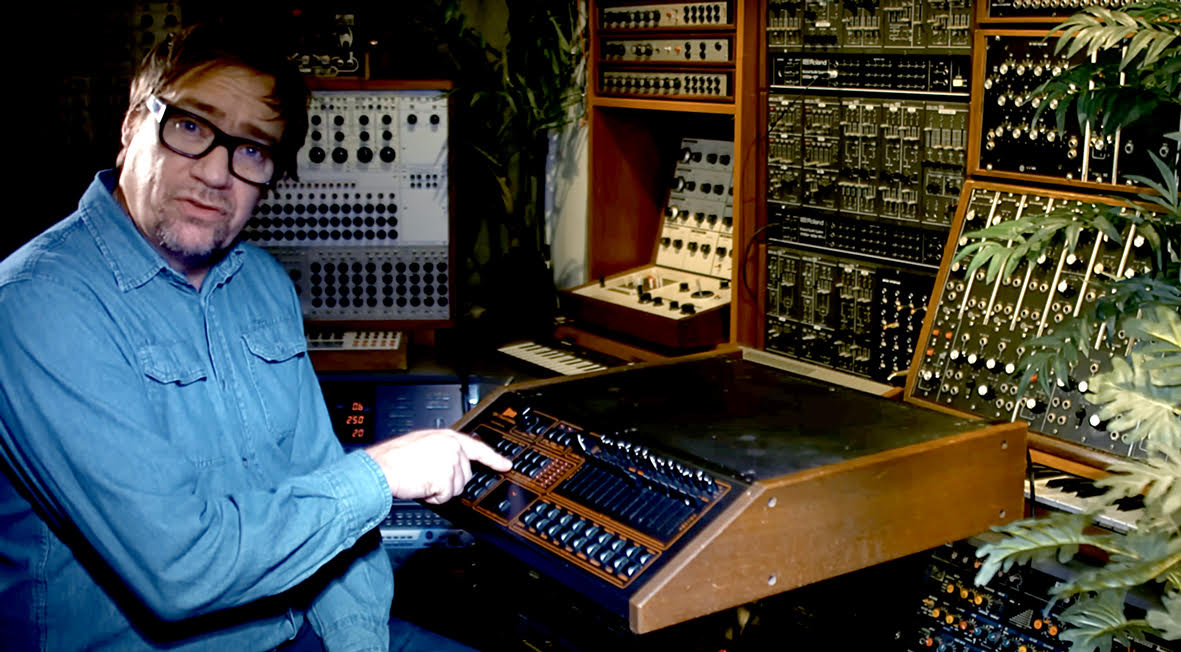
This series of studies explores an idea that Benge has been working on over the past year or so, namely that of Cybersynthesis. This involves programming self-contained patches on various modular systems which, once set in motion, will produce dynamic, evolving soundscapes, sometimes purely abstract in nature, at other times veering towards the more melodious
Many different methods were deployed in the patches, depending on the system being used, but normally multiple sequencer and switching devices were combined to give varying degrees of control over long time periods, often without repetition
Other things like random control signals and semi-random events were combined with the sequencers and switching units to bring variation to the performances the machines were making

The key idea at the heart of Cybernetics is the concept of bringing control to chaotic processes. To do this, some kind of feedback loop would ideally be established that can monitor and limit events that might otherwise spin out of control. The Serge and Modcan systems featured here each have various comparator circuits that can, to a certain extent, achieve this highly advanced synthesis feature
In the absence of such sensor paths, it is sometimes possible to use audio or voltage mixers and feedback chains to set various parameters to be on the very edge of chaotic behaviour, an approach used in many of the patches on display here
Other techniques such as the quantisation of voltages and the forcing of notes to play within certain predetermined musical scales were also employed in some of the pieces, which is another way of taming chaotic elements into into a more musical realm
Overall, a wholly experimental approach was applied to the various setups, with the intention of providing an insight into how these machines can behave. Of course, each system has an almost limitless depth to the complexity of patches available, and each track on the album provides just a single snapshot of each instrument used. But hopefully it provides an interesting glimpse into the wonders that these self-playing systems can achieve
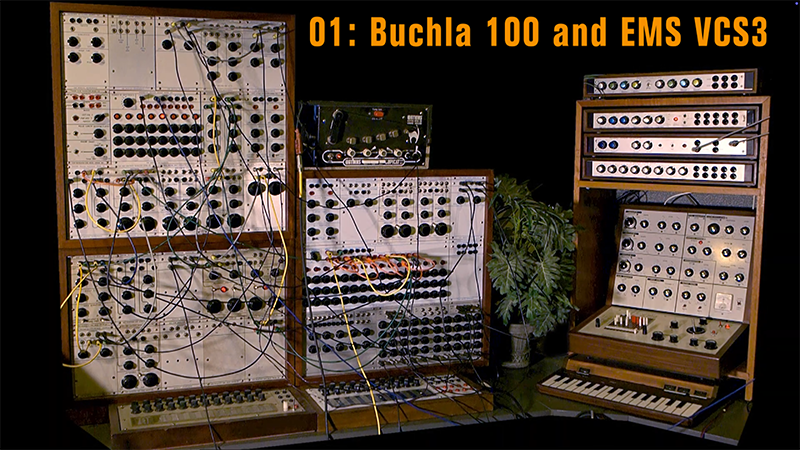
01 – Buchla 100 and EMS VCS3
The whole thing is being run by the EMS Random Voltage Generator, but that is being modulated by a divided down set of voltages from the Buchla 8-step sequencer, so it changes the randomness very slowly, which makes it seem like its evolving as it goes along. There are ring modulated VCOs, cross mod VCOs and pitch shifted VCOs, from both systems all being mixed on the 205 matrix mixer, which also has feedback paths set up to go to the WEM valve copycat and also the Buchla dual reverbs and dual compressors. So the whole patch is intermingling and feeding back on itself via the matrix mixer.
It’s a highly complex patch and is pretty much impossible to describe fully because I just kept patching it until I liked the result enough to let it run and film it for 10 minutes
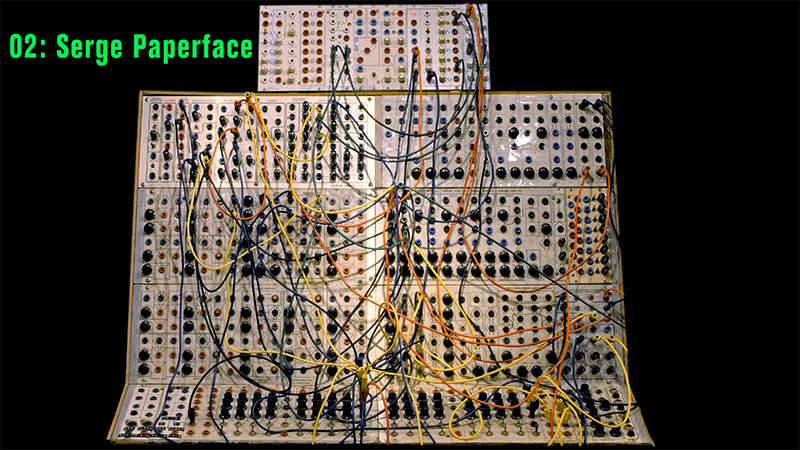
02 – Serge Paperface
I’m using the LW Gated Comparator and the 2 original Paperface Sequencers (from the mid-70s) to run things – as always with a big Serge patch it’s virtually impossible to keep track of all the connections – it’s like a giant living creature – but I use lots of delays here – the vintage Wilson, plus a brand new Prism Circuits Cascade Delay.
There are the old Serge dual spring reverbs in here, and the VC stereo mixer to mix it all up and move it all around. I like the distortions the lo-fi delays bring to the party
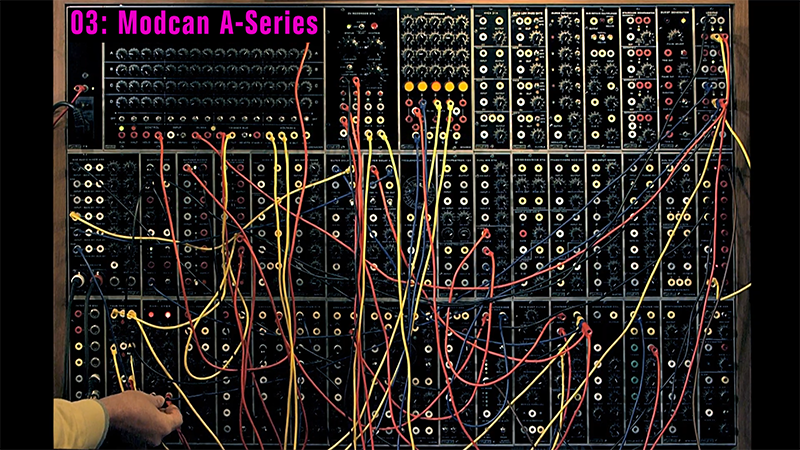
03 – Modcan A-Series
Two VCOs (one of which is the Miniwave) go into the Modcan 02A LPF then to the output mixer. Various AD and ADSR envelopes control the filter cutoff coming in at various levels. The melodic notes are chosen by sending a VC LFO into the Cyndustries Gated Comparator which is like a S&H crossed with a shift register and analog switch. It throws out notes that are semi-random. This output goes into a Quantiser to keep the notes sort of in tune. The Sequencer is used to vary the timing of the notes.
A second signal path consists of the above going into the Modcan CV Recorder / Sampler which is the lower set of notes you can hear. I quite like the way it’s all a bit out of time and wonky. The stereo output goes into my mixer (Neve 88D with GA 1073 analogue preamps/eqs), with a bit of reverb (Lexicon Model 300)

04 – ARP 2500
Two VCOs go into the ModAmp (VC ring mod) which is being switched on and off by one of the sequencers, then into the FiltAmp LPF/VCA which is the main output. The sequencer is set to loop round 9 steps, and provides CV into the 1st VCO pitch. The main out goes into a vintage delay unit (Yamaha D1500) which comes back into the Filter/Resonator creating a feedback loop, and the filter is being varied from row 2 of the sequencer. The sequencer also steps through 7 stages of the Mix Seq, once every 9 steps.
This second sequencer has various CVs as its inputs, so it changes slowly over the progression (9 x 7 = 63 steps), and as the CV sources are a very slow LFO and a slow random voltage, these are never quite the same over the cycling motion.
The mono output goes into my mixer (Neve 88D with GA 1073 analogue preamps/eqs), and another slow delay is added (Bel BD-80s) and also reverb (Lexicon Model 300)
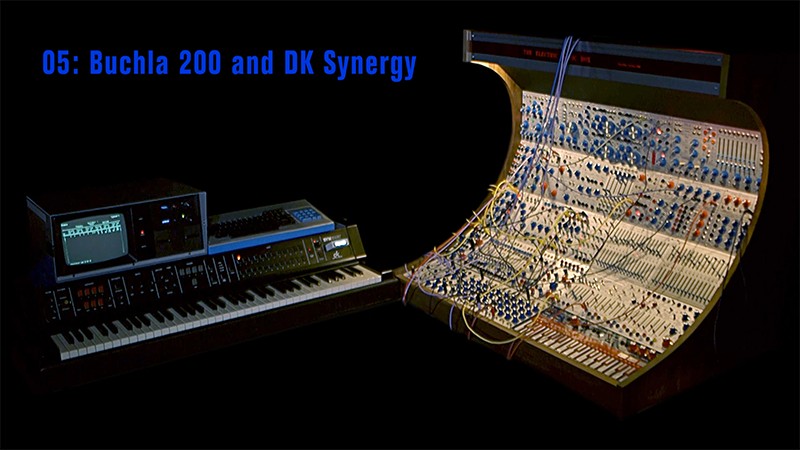
05 – Buchla 200 and DK Synergy
The Buchla (cloned) MARF is sending note and velocity (ie CV) data to the Digital Keyboards Synergy via a Kenton CV to MIDI converter – a very handy unit if you have a lot of analogue sequencers!
The Synergy and Buchla 200 go very well together – echoing some of the experiments Don Buchla was making into digital synthesis systems at the same time, starting out with hybrid systems (the 500 and 300 Series) and later fully digital systems (the Touché, 400 and 700 Series).
These systems were notoriously unreliable and in some cases unfinished products – as always with Don he was pushing the technology of the time to its limits and the results were often too problematic to have survived the test of time. The Synergy and Kaypro (GDS) on the other hand was a fully rounded out machine, and arguably was the best digital synthesiser ever created, even compared to its contemporary systems such as the Fairlight, Synclavier and PPG Waveterm. When combined with the Buchla 200 it gets very interesting indeed.
The Synergy is extremely flexible and you can set virtually any parameter to respond to velocity – and using the Kenton you can send any CV to modify the velocity over MIDI – something I am exploring in this patch.
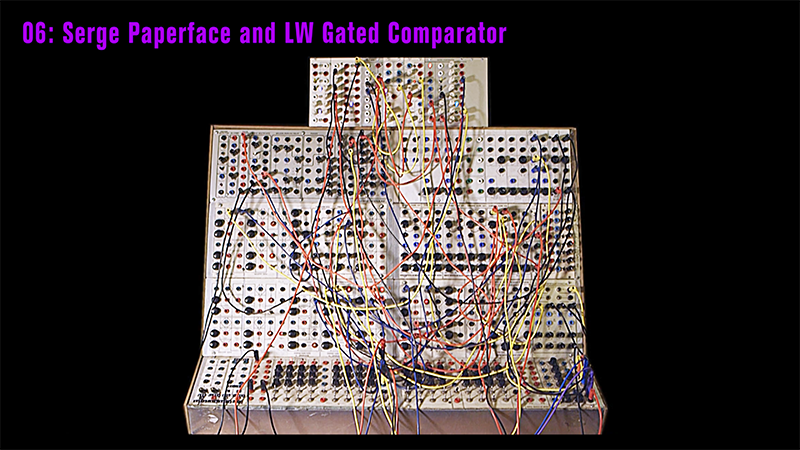
06 – Serge and LW Comparator
As in the previous Serge patch, I’m using the LW Gated Comparator and the 2 original Paperface Sequencers (from the mid-70s) to run things.
This patch is more melodic, using a Serge format Voltage Quantizer to hold it all together. It’s going through my Neve 88D along with some vintage FX units – an AMS RMX16, a Bel BD80S and a Lexicon Model 300.
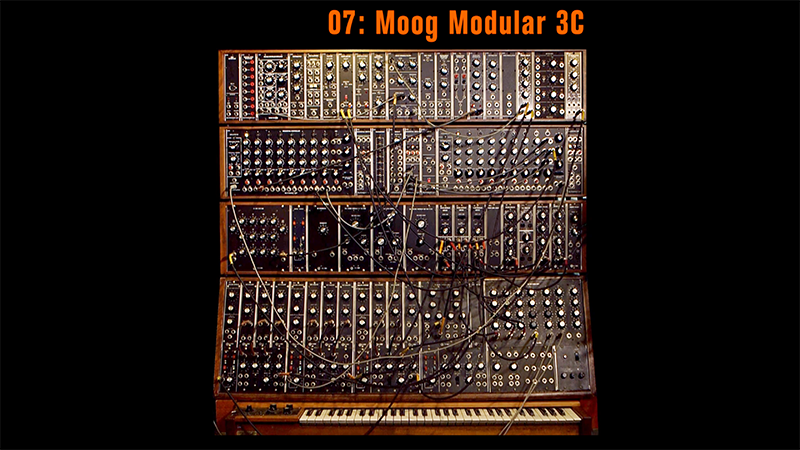
07 – Moog Modular 3C
This patch uses 10 VCOs, 3 VCAs, 4 envelopes, 1 filter, 2 sequencers, a VC Delay, a noise going through the Fixed Filter Bank, some sub-mixers, a slew and a stereo Matrix Mixer to create a slowly evolving, slightly haunting ambient tone poem…
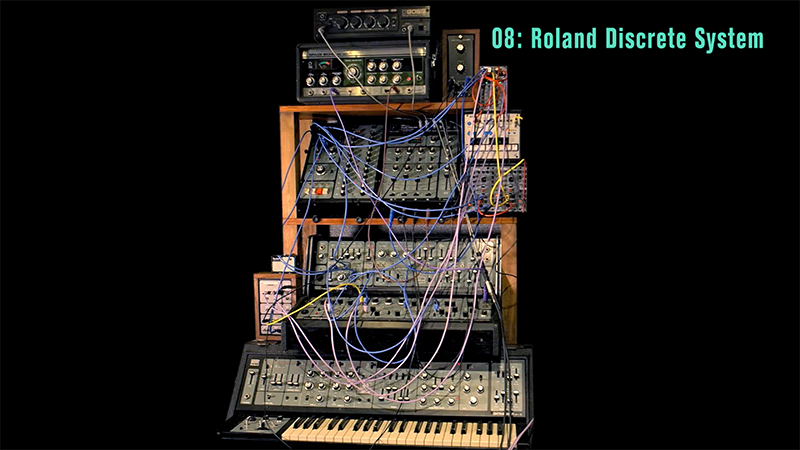
08 – Roland Discrete System
My Roland ‘System’ is made up from a full compliment of the System 100 units (101 main synth with the keyboard removed – NOT MODIFIED BY ME! – 102 expander synth, 103 mixer / reverb, and 104 sequencer, which have been removed from their original boxes – NOT BY ME!! – in other words this is a totally unique System 100 and uses up a lot less space than a stock one 😁), the SH5 dual VCO mono synth with specially designed modular breakout panel, the 201 tape delay, Boss delay unit, ALM ASQ1 sequencer based on the Roland SH101, and some Behringer 100M cloney modules – 2 x 180 sequencers, the dual mixer and 4 x analog switches
The patch uses 3 distinct ‘voices’ – the 101, 102 and SH5, all being sequenced by a combination of all the sequencers mentioned above. The switches are being used to split the voltages going to the 101 and SH5 so that they alternate and don’t play together, which kind of keeps some space in the patch
Lastly I use the 103 mixer to pan the 3 voices, and add the 2 delay units in various amounts – including the amazing sounding spring reverb built in to the mixer – this really does sound special for some reason and when I first got the system 100 it made me really happy. There are no other effect in this recording – just some compression from the Neve 88D desk
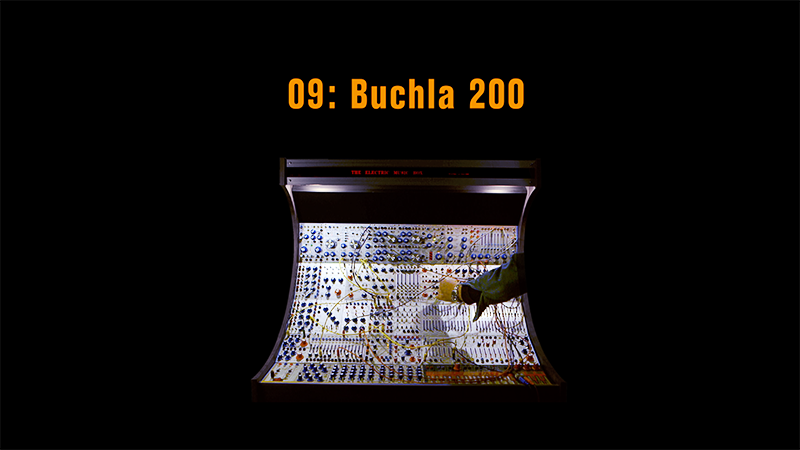
09 – Buchla 200
I’m using the 259 as the main sound source, which is being sent to various places: the 288 delay, the 296 filter bank and the Dodeca modules’s LPGs.
The MARF is combined with the 208 5 step sequencer to produce all the modulations, all powered from a 281 VC function generator.
The Dodeca mixer provides stereo panning and the general output.
Synthesiser programming and recording, design and concept: Benge (B D Edwards)
Made at Memetune Studios, England
(c)+(p) 2025 Memetune Recordings
Full length versions of these self-playing patches first appeared on Benge’s YouTube channel (@memetunestudios) under the title BACKGROUND MODULARS, the idea being that you put the videos of each modular synth on in the background while you work or do other things. In a similar way, the edited versions featured on this album can be similarly perused, or alternatively focussed on more deeply and enjoyed as a group of studies made on these fascinating instruments
